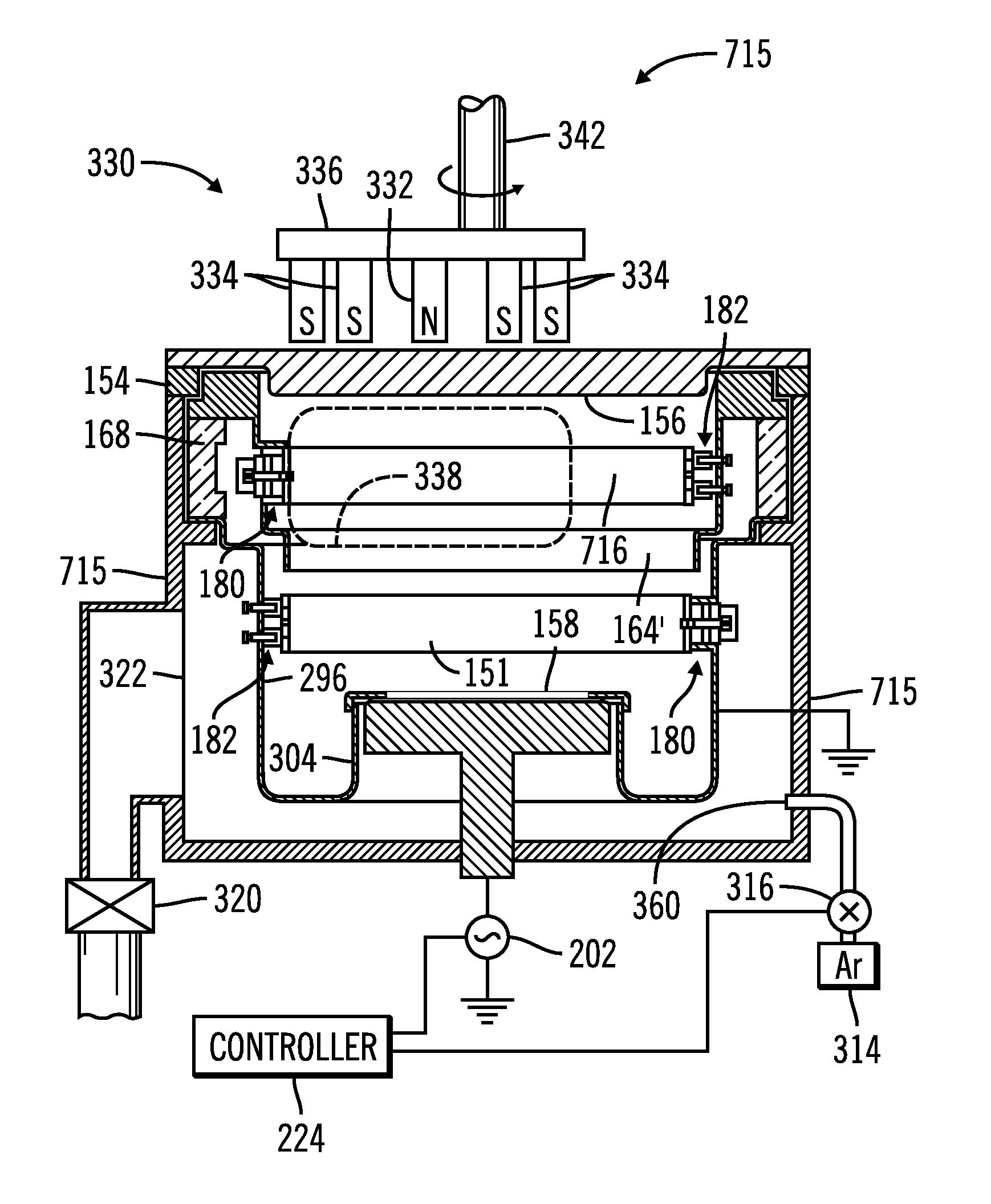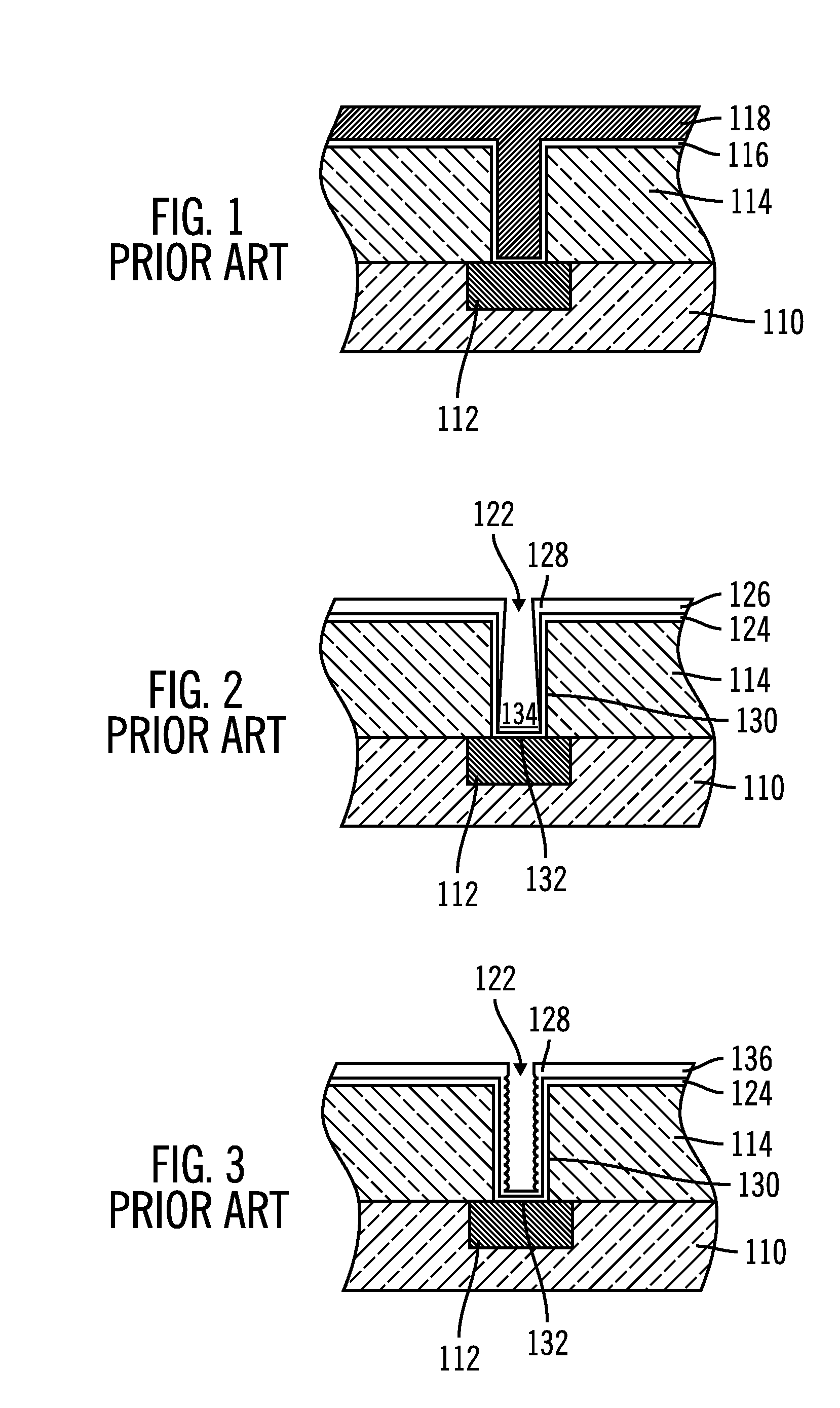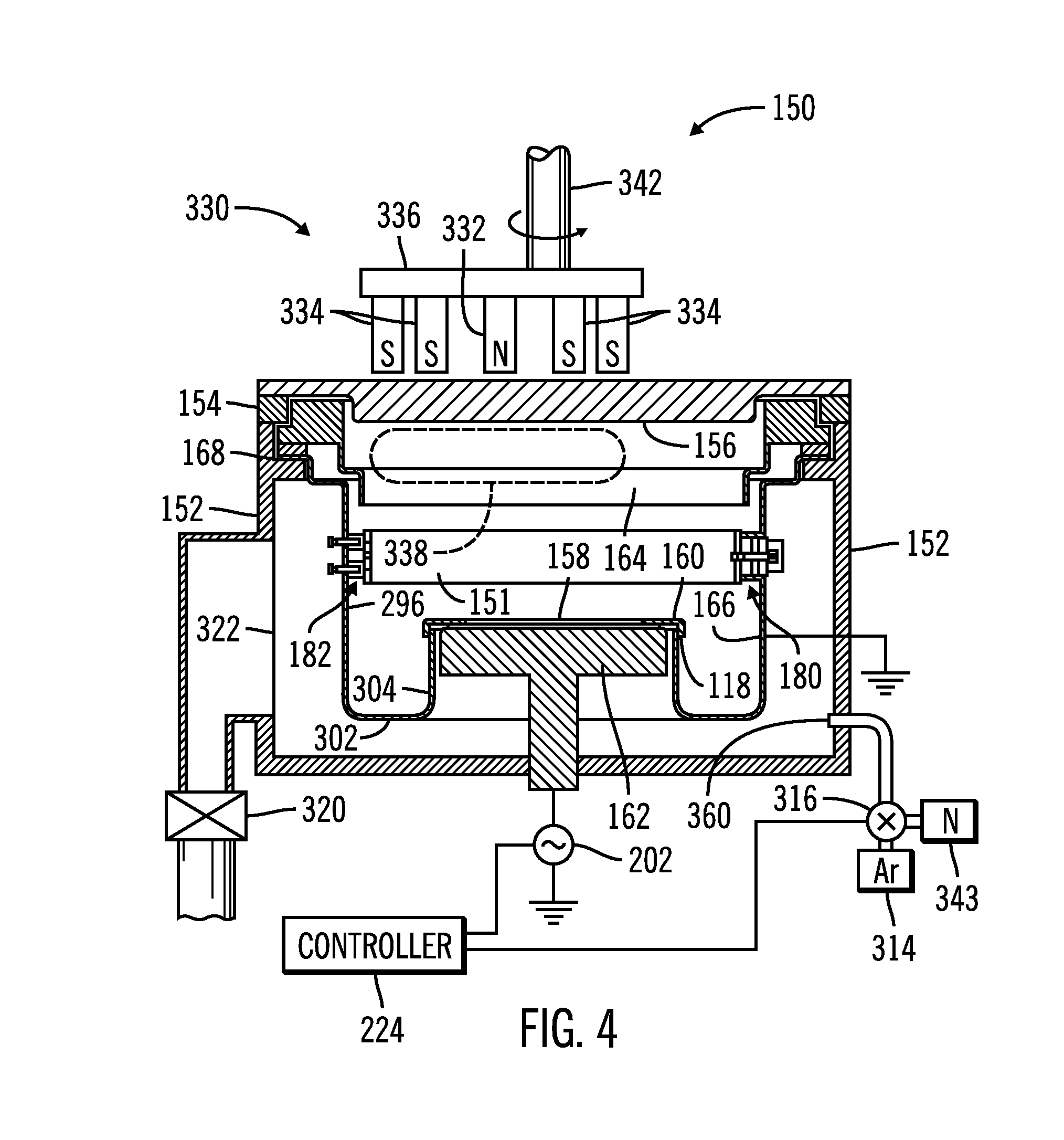Self-ionized and inductively-coupled plasma for sputtering and resputtering
a plasma and inductive coupling technology, applied in the direction of vacuum evaporation coating, electrolysis components, coatings, etc., can solve the problems of introducing reliability problems, difficult reflowing, and disadvantageous wide distribution
- Summary
- Abstract
- Description
- Claims
- Application Information
AI Technical Summary
Benefits of technology
Problems solved by technology
Method used
Image
Examples
Embodiment Construction
[0028]One embodiment of the present invention is directed to sputter depositing a liner material such as tantalum or tantalum nitride, by combining long-throw sputtering, self-ionized plasma (SIP) sputtering, inductively-coupled plasma (ICP) resputtering, and coil sputtering in one chamber. Long-throw sputtering is characterized by a relatively high ratio of the target-to-substrate distance and the substrate diameter. Long-throw SIP sputtering promotes deep hole coating of both the ionized and neutral deposition material components. ICP resputtering can reduce the thickness of layer bottom coverage of deep holes to reduce contact resistance. During ICP resputtering, ICP coil sputtering can deposit a protective layer, particularly on areas such as adjacent the hole openings where thinning by resputtering may not be desired.
[0029]Another embodiment of the present invention is directed to sputter depositing an interconnect material such as copper, by combining long-throw sputtering, se...
PUM
| Property | Measurement | Unit |
|---|---|---|
| Fraction | aaaaa | aaaaa |
| Power | aaaaa | aaaaa |
| Polarity | aaaaa | aaaaa |
Abstract
Description
Claims
Application Information
 Login to View More
Login to View More - R&D
- Intellectual Property
- Life Sciences
- Materials
- Tech Scout
- Unparalleled Data Quality
- Higher Quality Content
- 60% Fewer Hallucinations
Browse by: Latest US Patents, China's latest patents, Technical Efficacy Thesaurus, Application Domain, Technology Topic, Popular Technical Reports.
© 2025 PatSnap. All rights reserved.Legal|Privacy policy|Modern Slavery Act Transparency Statement|Sitemap|About US| Contact US: help@patsnap.com



